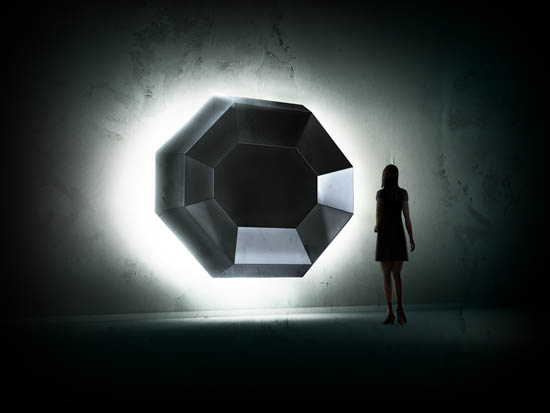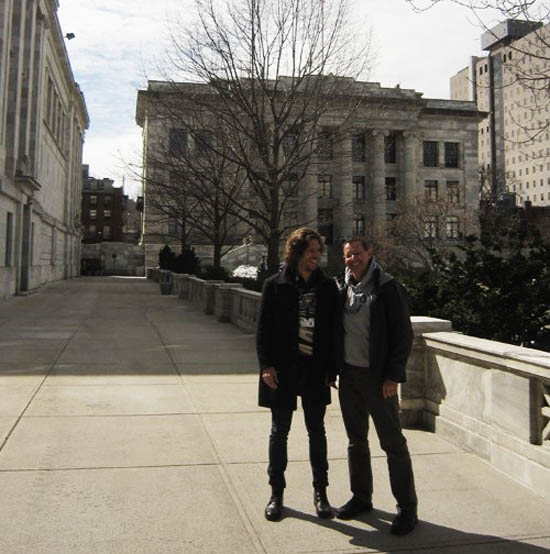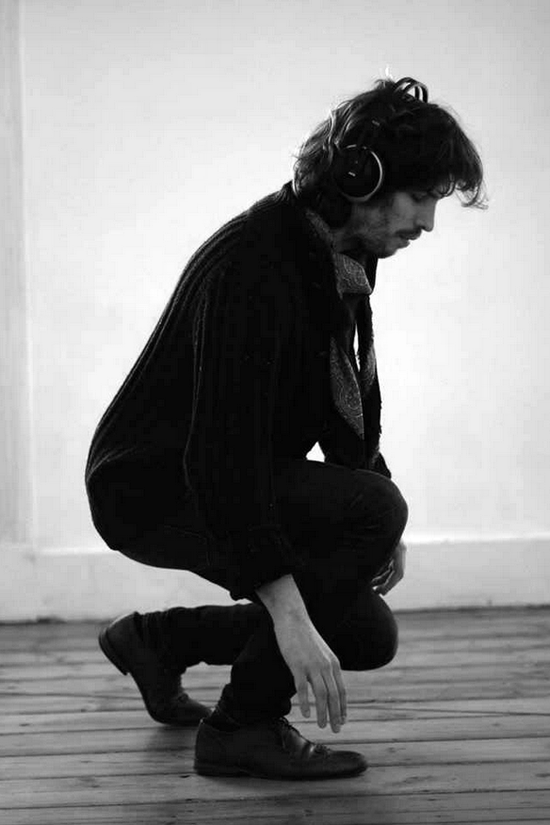 Digital artist Rudolfo Quintas, born in Porto and currently studying for a doctorate at the University of Algarve, and scientist Tom Kirchhausen, from Harvard Medical School, in Boston, promoted the intersection between art and science, creating «Absorption», an interactive audiovisual sculpture.
Digital artist Rudolfo Quintas, born in Porto and currently studying for a doctorate at the University of Algarve, and scientist Tom Kirchhausen, from Harvard Medical School, in Boston, promoted the intersection between art and science, creating «Absorption», an interactive audiovisual sculpture.
This crossover between art and science, which also had the collaboration of designer Mário Dominguez, resulted in a piece that recognizes the presence of people and interacts with the human body, by mimicking interactions that occur in cells.
The piece will be exhibited at the «Presense» exhibition, at the Adamastor Studios gallery, in Lisbon, from the 6th to the 31st of March.
The project arose from a challenge that Tom Kirchhausen proposed to the Portuguese artist, to create an interactive multimedia art installation based on the biological process of endocytosis mediated by the protein clathrin – a process that allows cells to internalize material from the surrounding extracellular environment, such as certain nutrients and viruses.
 «Absorption» was conceived as a joint research effort during Rudolfo Quintas' artistic residency at Tom Kirchhausen's laboratory, at the Department of Cell Biology at Harvard Medical School and at the Cellular and Molecular Medicine Program at Boston Children's Hospital, Boston.
«Absorption» was conceived as a joint research effort during Rudolfo Quintas' artistic residency at Tom Kirchhausen's laboratory, at the Department of Cell Biology at Harvard Medical School and at the Cellular and Molecular Medicine Program at Boston Children's Hospital, Boston.
This installation is an artistic metaphor for the molecular mechanisms of endocytosis, whose interactive narrative is built through the dynamic participation and intervention of each visitor.
According to Tom Kirchhausen, «Absorption» was thought of as a Work in progress, “that absorbs the person as if it were a nutrient or a virus, and that remembers to ingest it, in a way very similar to what a cell does in real life”.
The scientist talks about this collaboration: “It took just a few minutes in conversation with Rudolfo for an irresistible and exciting collaboration to start”.
Since then, “we spent many hours talking, discussing and laughing about how we could transform our science into an artistic expression that would be interesting and stimulating for everyone”.
According to the artist, the visit to Tom Kirchhausen's laboratory gave him the “unique opportunity to absorb the scientific experience, to refine it and bring it to its essence, to create a potentially pedagogical artistic experience of interaction between the body and sculpture ”.
 The development of a new projection technology led to the creation of this innovative artistic object, which merges with a driving concept in contemporary art, as the artist, instead of focusing on how the artistic experience is absorbed by the viewer, chooses to revert this perspective to explore how art can absorb the human presence.
The development of a new projection technology led to the creation of this innovative artistic object, which merges with a driving concept in contemporary art, as the artist, instead of focusing on how the artistic experience is absorbed by the viewer, chooses to revert this perspective to explore how art can absorb the human presence.
Verónica Metello, the project's curator, comments: “For a new representation and, consequently, a new reading of the biological process, this piece of interactive art was created whose innovative technology provides a sensitive and unexplored experience, in which each visitor becomes a co-creator”.
The sculpture will be on display at the “Presense” digital art exhibition, from 6 to 31 March, at the Adamastor Studios gallery, in Lisbon.
This is an innovative exhibition in the context of digital art in Portugal, in which Rudolfo Quintas explores the relationship between body, sensation and presence, between physical and digital space.
«Presense» reflects the latest developments in the exploration of new digital media, positioning itself in an innovative territory at the intersection of art with technology, science and philosophy.
This Artech-International production, under the «Presense» project, curated by Verónica Metello, is co-financed by DGArtes and co-produced by Tom Kirchhausen, professor of Cell Biology at Harvard Medical School and researcher at Boston Children's Hospital.
The project also has the support of Universidade Aberta, ISMAI – Instituto Universitário da Maia and CIAC – Center for Research in Art and Communication of the University of Algarve.
Author Antonio Piedade
© 2015 – Science in the Regional Press / Ciência Viva
António Piedade is a Biochemist and Science Communicator. He has published over four hundred articles and chronicles of scientific dissemination in the Portuguese press and twenty scientific articles in international journals.
He is the author of four books on science dissemination: “Iris Científica” (Mar da Palavra, 2005 – National Reading Plan),”Caminhos de Ciência” (Press University of Coimbra, 2011), “Silêncio Prodigioso” (Ed. author, 2012) and “Iris Científica 2” (Ed. author, 2014).

















Comments